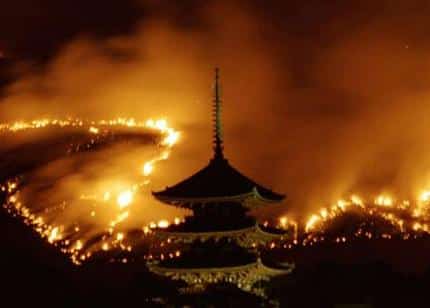An Introduction
- Our Records…
- Japan does not appear in history until 57 CE when it is first mentioned in Chinese histories. In these histories, it is referred to as “Wa.”

- The Chinese historians tell us of a land divided into a hundred or so separate tribal communities without writing or political unity.
- Their Records…
- The Japanese do not start writing their histories until around 600 AD; this historical writing culminates in 700 AD in the massive chronicles, The Record of Ancient Matters and the Chronicles of Japan.
- These chronicles tell a much different and much more legendary history of Japan, deriving the people of Japan from the gods themselves.
Some Questions…
- Where did the Japanese come from?
- Why did they settle the islands?
- What did life look like before history was written down?
- Geography
The Islands
- Japan consists of over 400 Islands but only the four largest are of historical importance (Hokkaido, Honshu, Shikoku, and Kyushu)
- Islands formed originally by violent volcanic activity on the sea bottom
- Mountainous land with numerous small rivers flowing directly to the sea.
- Let’s look at size…
- Total land area of Japan is 380 000km2 (smaller than Baffin Island)
- Today’s population is 125 million (five times that of Canada)
- 1/5th of the land sufficiently level enough to be cultivated -> therefore Japanese agriculture is one of the most intensive in the entire world
Baffin Island vs. Japan
- Temperature
- Major Islands have temperate climate and abundant rainfall
- Experiences few extremes in temperature
Resources
- Japan has few natural resources
- Must import almost all energy requirements (oil, minerals, and a great deal of food)
- Has an abundance of fish and a wide range of vegetable crops
- Has one of the world’s healthiest diets (lifespan of the average Japanese person longest in the world)
The Situation…
- Japanese Islands at the extreme edge of the Eurasian land mass
- At its closest point, 240 km from the Asian continent
- The Sea of Japan (difficult to cross)
- Japan deeply influenced by Chinese and Korean civilization, but historical interaction never continuous -> Japan borrows and adapts
Isolation
- Because of isolation -> high degree of continuity prior to the impact of Western imperialism in the 19th century
- No real social disruptions, no revolutionary thinkers -> therefore the catalysts of change were external influences (Chinese and Korean cultures)
- 10 000 BCE-710CE
- The Formative Period
- And so we begin…
- During last ice age (ended 11, 000 years ago) Japanese island joined with Asian mainland by a land bridge
- People from Korea, Northeast Asia crossed land mass and settled
- Earliest archaeological remains 9500 BCE (earliest pottery remains in world history)
- Over time…
- Joined by peoples from South China or Polynesian Islands
- Peoples blending together
- Creation of a distinct culture, Jomon (lasted until 300 BCE)
- The Ainu
- During same time another people came to Hokkaido.
- These people were called the Ainu.
